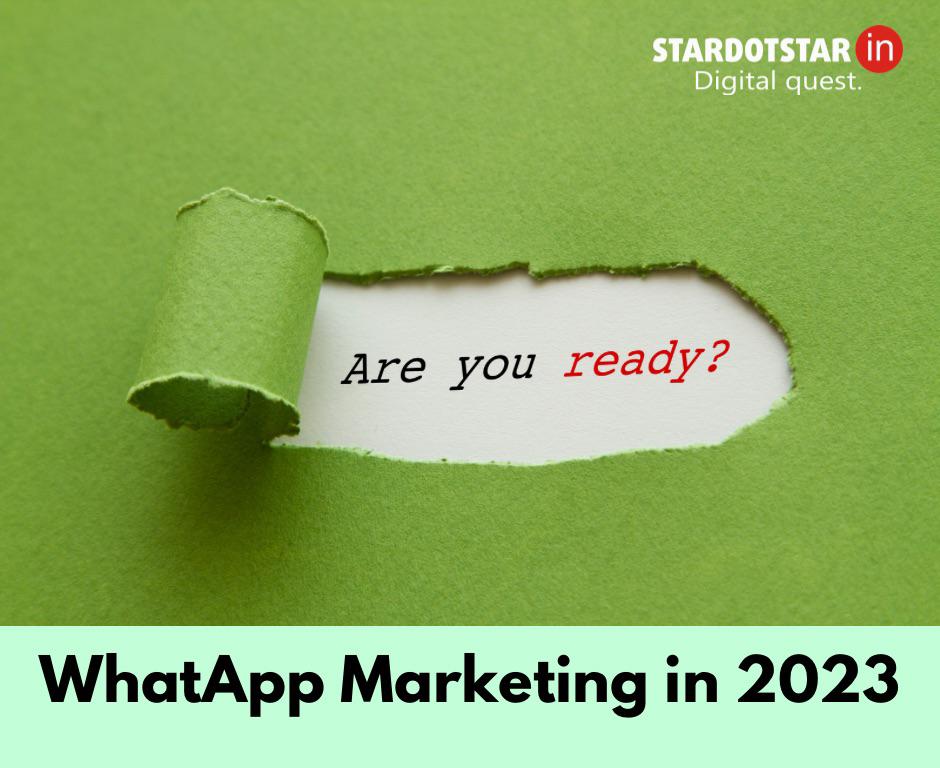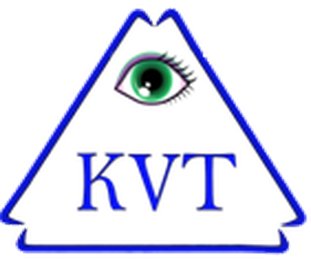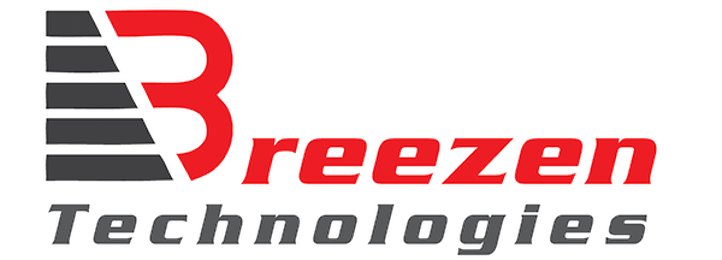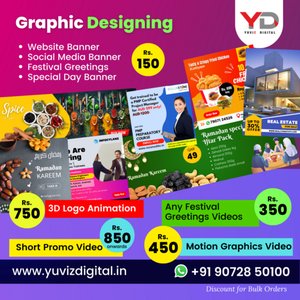Dhaslee Technologies Private Limited is a fast growing website and mobile app design and development company providing one stop solution to enterprises across the world. Dhaslee Technologies is an org

DHASLEE TECHNOLOGIES PRIVATE LIMITED
Dhaslee Technologies Private Limited is a fast growing website and mobile app design and development company providing one stop solution to enterprises across the world. Dhaslee Technologies is an organization driven with enthusiasm and desire of energetic and skilled professionals.
First Floor, Vabin Plaza, Near IOB ATM, Eraniel Road, Thingal Nagar, KanyaKumari District, Tamil Nadu - 629802.
Call Us : 890 353 5386
EMAIL ID : info@dhaslee.com

ONE STOP SOLUTION FOR YOUR WEBSITE DESIGN AND DEVELOPMENT FOR YOUR ENTIRE BUSINESS NEEDS
We are specialised in website designing, custom website development, E-Commerce website development, content management system website development, CRM development, HRM development, mobile app development which includes android app development, IOS app development, Hybrid app development, SEO, Digital marketing, Graphic designing, Logo Designing and SMS services.
WHO WE ARE

We Provide One Stop Solution For Your Entire Business Needs
Dhaslee Technologies Private Limited is a fast growing website and mobile app design and development company providing one stop solution to enterprises across the world. Dhaslee Technologies is an organization driven with enthusiasm and desire of energetic and skilled professionals. We are specialised in website designing, custom website development, E-Commerce website development, content management system website development, CRM development, HRM development, mobile app development which includes android app development, IOS app development, Hybrid app development, SEO, Digital marketing, Graphic designing, Logo Designing and SMS services.
DHASLEE TECHNOLOGIES
Core Values

Mission
Our Mission is to provide solutions for the modern business needs.

Vision
Our vision is to become a global player in the information technology industry.

Social Responsibility
We have the social responsibility to crack the unemployment and create more jobs.
OUR SERVICES
We are Specialized in
Website Designing
We deliver high quality website designs for your websites through our professionals for your entire business needs.
Website designing refers to the process of creating the visual layout, user interface, and overall appearance of a website. It involves various elements such as layout, color schemes, typography, images, and interactive features to provide an aesthetically pleasing and user-friendly experience. The main goal of website design is to engage visitors, convey information effectively, and encourage them to take specific actions, such as making a purchase or filling out a form.
Here are some key aspects of website designing:
Planning and Research: Before starting the design process, it's essential to understand the purpose of the website, target audience, and specific goals. Conducting market research and competitor analysis can also provide valuable insights.
User Interface (UI) Design: This involves creating the visual elements of the website, including layout, buttons, menus, icons, and other graphical components. The goal is to make the interface intuitive and easy to navigate.
Responsive Design: Websites should be designed to be responsive, meaning they adapt and look great on various devices such as desktops, laptops, tablets, and smartphones.
Typography: Choosing appropriate fonts and typography plays a significant role in enhancing readability and setting the tone for the website.
Color Scheme: Selecting an appealing color palette is crucial, as colors can influence emotions, create a brand identity, and improve visual aesthetics.
Multimedia Integration: Properly incorporating images, videos, and other multimedia elements can enhance user engagement and convey information effectively.
Consistency: Maintaining consistency in design elements, such as colors, fonts, and layout, throughout the website ensures a cohesive and professional appearance.
Navigation: Creating an intuitive and clear navigation structure helps users find information easily and enhances their overall browsing experience.
Accessibility: Ensuring the website is accessible to all users, including those with disabilities, is an important consideration in modern web design.
Call-to-Action (CTA): Strategically placing CTAs throughout the website can guide users towards specific actions, such as signing up for a newsletter or making a purchase.
Loading Speed: Optimizing the website's loading speed is essential for a positive user experience and better search engine rankings.
Testing and Iteration: After designing the website, it's crucial to conduct testing on various browsers and devices to identify and fix any issues. Feedback from users can also help make improvements.
Web design is an ever-evolving field, and designers often use various tools and technologies such as graphic design software (e.g., Adobe Photoshop, Sketch), wire framing and prototyping tools, HTML, CSS, and JavaScript to create interactive and visually appealing websites.
Website Development
We develop high quality websites using advance and latest technologies for your modern business needs.
Website development refers to the process of building and implementing the functional components of a website. It involves turning the design and concepts created during the website designing phase into a fully functional and interactive website that users can access and interact with through their web browsers.
Website development encompasses both front-end and back-end development:
Front-end Development: Front-end development deals with the user interface and the visual elements of the website that users interact with directly. Front-end developers use web technologies like HTML (Hypertext Markup Language), CSS (Cascading Style Sheets), and JavaScript to implement the design and make the website responsive and user-friendly. They ensure that the website's layout and design render correctly across different devices and browsers.
Back-end Development: Back-end development is concerned with the server-side of the website. Back-end developers work with server-side programming languages (e.g., PHP, Python, Ruby, Java, Node.js) and databases to handle data storage, processing, and server communication. They create the logic and functionality that powers the website and manages user interactions, such as form submissions and database queries.
The website development process typically involves the following steps:
Requirement Analysis: Understanding the project requirements, functionality needed, and the overall scope of the website.
Planning: Creating a development plan that outlines the technologies to be used, the development timeline, and the division of tasks.
Front-end Development: Implementing the website design using HTML, CSS, and JavaScript to create the user interface and interactivity.
Back-end Development: Building the server-side logic and database integration to enable dynamic functionality.
Integration: Connecting the front-end and back-end components to create a cohesive website.
Testing: Conducting thorough testing to identify and fix bugs and ensure the website works as expected across different devices and browsers.
Deployment: Making the website live and accessible to users by hosting it on a web server.
Maintenance and Updates: Regularly monitoring the website for issues, performing updates, and making improvements as needed to keep it running smoothly and securely.
Web development can involve the use of various frameworks, libraries, and content management systems (CMS) that expedite the development process and provide additional functionality. Some popular CMS platforms include WordPress, Joomla, and Drupal.
Website development is a collaborative effort that may involve front-end developers, back-end developers, web designers, content creators, and project managers working together to create a successful website that meets the project's objectives and the needs of its users.
E-commerce Development
We have a team of professionals who are well experienced in E-Commerce development to fulfil your business needs.
E-commerce development refers to the process of creating and building online platforms that facilitate buying and selling of products and services over the internet. E-commerce websites enable businesses to reach a global audience, operate 24/7, and provide customers with a convenient way to browse, compare, and purchase products online. E-commerce development involves a combination of web design, front-end development, back-end development, and integration with payment gateways and other third-party services.
Here are some key aspects and steps involved in e-commerce development:
Platform Selection: Choosing the right e-commerce platform is crucial. There are various options available, including hosted platforms like Shopify, BigCommerce, and Squarespace, as well as self-hosted solutions like WooCommerce (built on WordPress) and Magento. The choice of platform depends on factors such as the scale of the business, budget, required features, and customization needs.
Product Catalog Management: Setting up and managing the product catalog is an essential part of e-commerce development. This involves creating categories, adding product images, descriptions, pricing, and managing inventory.
User Interface (UI) Design: Designing an intuitive and visually appealing user interface is critical for an e-commerce website. The design should prioritize easy navigation, clear calls-to-action, and a seamless checkout process.
Front-end Development: Front-end development involves implementing the UI design using HTML, CSS, and JavaScript to create a responsive and user-friendly website that works well on various devices.
Back-end Development: Back-end development handles the server-side functionalities of the e-commerce website. This includes creating user accounts, managing shopping carts, processing orders, handling payments, and integrating with payment gateways and shipping services.
Security: E-commerce websites deal with sensitive customer information like personal details and payment data. Implementing robust security measures, such as SSL certificates and encryption, is crucial to protect customer data and build trust.
Payment Integration: Integrating secure and reliable payment gateways is essential for smooth transactions. Common payment gateways include PayPal, Stripe, and Authorize.Net.
Shipping and Logistics Integration: Integrating with shipping carriers and logistics providers allows real-time shipping cost calculation, package tracking, and efficient order fulfillment.
Search and Filters: Implementing effective search functionality and filters helps users find products quickly and enhances the overall shopping experience.
Shopping Cart and Checkout: Designing a user-friendly shopping cart and optimizing the checkout process to minimize cart abandonment rates is essential.
Testing and Quality Assurance: Thoroughly testing the e-commerce website for functionality, usability, and security issues is crucial before launch.
Launch and Maintenance: After launching the website, ongoing maintenance, updates, and regular monitoring are necessary to ensure the website operates smoothly and remains secure.
E-commerce development requires a multidisciplinary team, including web developers, web designers, UX/UI designers, content creators, and project managers, working together to create a successful online store that meets the needs of the business and provides an excellent shopping experience for customers.
CMS Website Development
CMS website development makes your website ready in a short span of time. If offers one click website development.
CMS (Content Management System) website development involves building websites using a content management system—a software application that allows users to create, manage, and publish digital content easily without requiring advanced technical knowledge. CMS platforms simplify the process of website development, making it more accessible to individuals and businesses that do not have extensive web development expertise.
Here are the key steps involved in CMS website development:
Platform Selection: Choose the most suitable CMS platform for your needs. Some popular CMS options include WordPress, Joomla, Drupal, Magento (for e-commerce), and others. The choice of CMS depends on factors like the website's purpose, scalability, required features, and level of customization.
Installation: Install the chosen CMS on your web hosting server. Most hosting providers offer one-click installations for popular CMS platforms.
Theme Selection and Customization: Choose a pre-designed theme or template that aligns with your website's goals and branding. Customize the theme to match your specific requirements, such as color schemes, fonts, and layout.
Plugin/Module Integration: CMS platforms usually support plugins (in WordPress) or modules/extensions (in Joomla and Drupal) that add additional functionalities to the website. Integrate and configure relevant plugins/modules to enhance your website's capabilities.
Content Creation: Use the CMS's intuitive editor to create and format website content. You can easily add and manage pages, blog posts, images, videos, and other media.
User Management: Set up user roles and permissions to manage access levels for different users, allowing multiple contributors or editors to work on the website.
Search Engine Optimization (SEO): Implement SEO best practices by optimizing meta tags, URLs, and content to improve the website's visibility in search engine results.
Responsive Design: Ensure that the website is responsive and mobile-friendly, so it looks and functions well on various devices, including desktops, tablets, and smartphones.
Security: Apply necessary security measures, such as keeping the CMS and its plugins/modules updated, using secure login methods, and using SSL certificates to protect user data.
Testing: Thoroughly test the website's functionality, performance, and compatibility across different browsers and devices.
Launch: Once the website is complete and tested, launch it to make it live and accessible to visitors.
Maintenance and Updates: Regularly update the CMS, themes, and plugins/modules to ensure the website remains secure and up-to-date. Also, perform routine backups to safeguard your website's data.
CMS website development offers numerous advantages, including ease of content management, reduced development time, and the ability to scale the website as your business grows. It allows users with limited technical expertise to maintain and update their websites effectively. However, it's essential to choose a reputable and well-supported CMS platform and to keep the website and its components updated to prevent security vulnerabilities.
CRM Development
CRM applications makes your business easier by maintaining your customer communications in a single platform.
CRM (Customer Relationship Management) development refers to the process of creating and customizing software applications or systems that help businesses manage their interactions and relationships with customers. A CRM system enables organizations to centralize customer data, track interactions, and streamline various processes related to sales, marketing, and customer service. It aims to improve customer engagement, retention, and overall business efficiency.
Here are the key aspects and steps involved in CRM development:
Requirement Analysis: Understand the specific needs and requirements of the business. Identify the key functionalities and features that the CRM system should have to meet the organization's goals.
Platform Selection: Choose the appropriate CRM platform or framework that aligns with the business requirements. Some popular CRM platforms include Salesforce, Microsoft Dynamics 365, HubSpot CRM, Zoho CRM, and others.
Customization: Customize the CRM system to cater to the unique needs of the business. This involves configuring settings, data fields, workflows, and access permissions.
Integration: Integrate the CRM system with other existing systems and tools used by the organization, such as email marketing software, marketing automation tools, and e-commerce platforms.
Customer Data Management: Implement a structured database to store and manage customer data effectively. This may include contact information, purchase history, communication logs, and other relevant data.
Sales Process Automation: Automate repetitive sales tasks and workflows, such as lead capture, lead scoring, sales pipeline management, and follow-up activities.
Marketing Automation: Integrate marketing automation features to manage and track marketing campaigns, email marketing, lead nurturing, and customer segmentation.
Customer Service Management: Enable customer service functionalities, such as ticket management, case tracking, and customer support portals.
Reporting and Analytics: Implement reporting and analytics features to provide insights into sales performance, customer behavior, and overall business metrics.
Mobile Compatibility: Ensure that the CRM system is mobile-friendly and accessible on various devices, allowing users to access critical information while on the go.
User Training and Support: Provide training to employees to effectively use the CRM system. Offer ongoing support to address any issues and help users make the most of the CRM's capabilities.
Security and Data Privacy: Implement robust security measures to protect sensitive customer data and comply with data privacy regulations, such as GDPR (General Data Protection Regulation) and CCPA (California Consumer Privacy Act).
CRM development can be tailored to meet the specific needs of different industries and businesses, ranging from small startups to large enterprises. The goal of a well-implemented CRM system is to enhance customer experience, improve sales efficiency, foster better customer relationships, and ultimately drive business growth.
HRM Development
CRM applications makes your business easier by maintaining your customer communications in a single platform.
HRM (Human Resource Management) development refers to the process of creating and customizing software applications or systems that help organizations manage their human resources effectively. HRM systems streamline various HR processes, automate tasks, and centralize employee data, making it easier for HR professionals to manage personnel-related activities.
Here are the key aspects and steps involved in HRM development:
Requirement Analysis: Understand the specific HR needs of the organization. Identify the key functionalities and features that the HRM system should have to support the HR team's activities.
Platform Selection: Choose the appropriate HRM platform or framework that aligns with the organization's requirements. Some popular HRM platforms include SAP SuccessFactors, Workday, Oracle HCM Cloud, BambooHR, and others.
Customization: Customize the HRM system to cater to the unique needs of the organization. This may involve configuring settings, creating custom fields, defining workflows, and setting up access permissions.
Employee Data Management: Implement a structured database to store and manage employee data, such as personal information, employment history, performance reviews, training records, and benefits.
Recruitment and Onboarding: Automate and streamline the recruitment process, including job posting, candidate screening, applicant tracking, and onboarding new employees.
Performance Management: Set up performance management features to conduct employee evaluations, set goals, and track performance metrics.
Training and Development: Provide functionalities for managing employee training and development programs, including training needs assessment, course scheduling, and tracking employee progress.
Leave and Attendance Management: Implement features for managing employee leave requests, tracking attendance, and calculating leave balances.
Payroll and Compensation: Integrate payroll and compensation management to automate payroll processing, calculate salaries, and manage employee benefits.
Employee Self-Service: Provide an employee self-service portal where employees can access and update their personal information, view pay stubs, request leave, and participate in performance evaluations.
Reporting and Analytics: Include reporting and analytics features to provide HR professionals with insights into workforce trends, turnover rates, and other relevant HR metrics.
Security and Data Privacy: Implement robust security measures to protect sensitive employee data and comply with data privacy regulations.
HRM development can vary based on the size and complexity of the organization and its HR requirements. Small businesses may opt for simpler HRM systems, while large enterprises may require more comprehensive and integrated solutions. The goal of HRM development is to improve HR processes, enhance employee engagement and satisfaction, optimize workforce management, and support the overall growth and success of the organization.
Mobile App Development
We develop high quality and durable android, ios and hybrid mobile apps with elegant design and with robust technologies.
Mobile app development refers to the process of creating software applications designed to run on mobile devices, such as smartphones and tablets. Mobile apps are built for specific operating systems, such as Android and iOS, and they offer a wide range of functionalities and services to users. The development process involves several steps, including planning, design, development, testing, and deployment.
Here are the key aspects and steps involved in mobile app development:
Idea and Concept: Begin by defining the purpose and goals of the mobile app. Conduct market research and competitor analysis to identify potential opportunities and assess the demand for the app.
Platform Selection: Decide on the target mobile platforms for the app. The two dominant platforms are Android (Google's operating system) and iOS (Apple's operating system). You can choose to develop for one platform first (native app) or go for cross-platform development to target multiple platforms using a single codebase.
Design: Create the app's user interface (UI) and user experience (UX) design. Focus on intuitive navigation, visual appeal, and consistency across different screens.
Development: Develop the app's functionality and features. For native app development, use programming languages specific to each platform (Java/Kotlin for Android and Swift/Objective-C for iOS). For cross-platform development, popular frameworks like React Native, Flutter, or Xamarin can be used.
Integration: Integrate the app with relevant services and APIs, such as social media integration, payment gateways, and cloud storage.
Testing: Thoroughly test the app on different devices, screen sizes, and operating system versions to identify and fix bugs, ensure smooth performance, and optimize user experience.
Security: Implement security measures to protect user data and ensure the app complies with relevant data protection regulations.
App Store Submission: Prepare the app for submission to the respective app stores (Google Play Store for Android and Apple App Store for iOS). This includes meeting the app store guidelines and providing necessary assets and information for listing.
Deployment: Release the app on the app stores and make it available for download by users.
Monitoring and Updates: Regularly monitor the app's performance and user feedback. Gather insights from analytics to identify areas for improvement and release updates to enhance functionality and address issues.
Marketing and Promotion: Develop a marketing strategy to promote the app and attract users. Utilize various marketing channels, such as social media, app store optimization (ASO), and paid advertising, to increase app visibility.
Mobile app development is a dynamic and iterative process. Continuous improvement and updates are essential to keep the app relevant, competitive, and in line with user expectations. Successful mobile app development requires collaboration between designers, developers, testers, marketers, and project managers to create an app that delivers a positive user experience and meets the business objectives.
SEO
SEO provides good ranking for your websites which will help your websites to display in the top of search results.
SEO (Search Engine Optimization) is the practice of optimizing a website or web page to improve its visibility and ranking in search engine results. The primary goal of SEO is to increase organic (non-paid) traffic to a website by making it more relevant and appealing to search engines and users. SEO involves various techniques and strategies to enhance a website's online presence and authority, making it more likely to appear in search engine results when users search for relevant keywords or phrases.
Here are some key aspects and techniques of SEO:
Keyword Research: Identify relevant keywords and phrases that potential visitors might use to search for information related to your website's content or offerings. Keyword research helps you understand what users are looking for and allows you to optimize your content accordingly.
On-Page SEO: Optimize individual web pages to improve their visibility in search results. This includes optimizing page titles, meta descriptions, headings, URL structure, and content. Use relevant keywords naturally in your content while ensuring it remains valuable and user-friendly.
Content Quality: Create high-quality, relevant, and valuable content that addresses the needs and interests of your target audience. Engaging and informative content tends to attract more visitors and encourages other websites to link to your content, improving your site's authority.
Backlinks and Link Building: Earn high-quality backlinks from other reputable websites. Backlinks act as endorsements for your website, indicating to search engines that your content is valuable and authoritative.
Technical SEO: Optimize the technical aspects of your website to ensure it is crawlable and indexable by search engines. This includes optimizing website speed, fixing broken links, using canonical tags, and creating XML sitemaps.
Mobile-Friendly Design: Ensure your website is responsive and performs well on mobile devices, as mobile-friendliness is a crucial ranking factor in search engines.
User Experience (UX): Create a positive user experience by making your website easy to navigate, providing clear calls-to-action, and minimizing page loading times.
Local SEO: If your business operates locally, optimize for local search by creating and optimizing your Google My Business listing, getting reviews, and using local keywords.
Social Media Integration: Utilize social media to promote your content, increase brand visibility, and potentially attract more links and traffic.
Analytics and Monitoring: Use tools like Google Analytics to track and analyze website traffic, user behavior, and keyword performance. Monitor your SEO efforts and make data-driven decisions for continuous improvement.
SEO is an ongoing process, and achieving and maintaining high search engine rankings requires consistent effort, continuous monitoring, and adapting to changing search engine algorithms. The ultimate aim is to provide valuable content and a positive user experience, which search engines reward with higher rankings in search results.
Digital Marketing
Our digital marketing professionals make your product to reach every internet user through the modern internet platforms.
Digital marketing refers to the use of digital channels and technologies to promote products, services, brands, or businesses to a targeted audience. It encompasses a wide range of online marketing tactics and strategies to reach and engage potential customers through various digital platforms and devices. Digital marketing leverages the internet and electronic devices to connect with the audience in a more personalized and interactive manner compared to traditional marketing methods.
Here are some key components and strategies of digital marketing:
Search Engine Optimization (SEO): SEO is the process of optimizing websites and content to improve their visibility and ranking in search engine results. The goal is to attract organic traffic by appearing higher in search engine results pages (SERPs) for relevant keywords.
Content Marketing: Content marketing involves creating and distributing valuable and relevant content to attract and engage the target audience. Content can be in the form of blog posts, articles, videos, infographics, ebooks, and more.
Social Media Marketing: Social media platforms are used to promote content, interact with the audience, and build brand awareness. Social media marketing involves creating and sharing content on platforms like Facebook, Instagram, Twitter, LinkedIn, and others.
Email Marketing: Email marketing is the practice of sending targeted emails to a list of subscribers. It is used to nurture leads, promote products, share valuable content, and build relationships with customers.
Pay-Per-Click (PPC) Advertising: PPC advertising involves paying for ads to appear on search engines or other websites. Advertisers pay when users click on their ads, making it a cost-effective way to drive targeted traffic to a website.
Influencer Marketing: Influencer marketing involves collaborating with influencers—individuals with a significant online following—to promote products or services. Influencers can help reach a specific target audience and build trust through their recommendations.
Affiliate Marketing: Affiliate marketing is a performance-based marketing strategy where businesses reward affiliates for driving traffic or sales to their website through the affiliate's marketing efforts.
Video Marketing: Video marketing involves using videos to promote products or services. It has become increasingly popular due to the high engagement rates and reach of video content.
Web Analytics and Conversion Rate Optimization (CRO): Web analytics tools are used to track website traffic and user behavior. Conversion rate optimization aims to improve the percentage of website visitors who take desired actions, such as making a purchase or filling out a form.
Mobile Marketing: Mobile marketing targets users on mobile devices through SMS marketing, mobile apps, and mobile-optimized websites.
Digital marketing offers various advantages, such as cost-effectiveness, targeted audience reach, real-time tracking and analytics, and the ability to personalize marketing messages. It allows businesses to connect with their audience on a global scale and measure the effectiveness of their marketing efforts, enabling data-driven decision-making for continuous improvement.
Graphic Designing
Our highly experienced graphic designers provide high quality and cutting edge designs for your modern needs.
Graphic designing refers to the process of creating visual content using various elements such as images, typography, colors, and illustrations. Graphic designers use their creativity and skills to communicate messages, convey information, and evoke emotions through visual means. The end goal of graphic design is to create visually appealing and effective designs that serve a specific purpose, whether it's for branding, marketing, communication, or artistic expression.
Here are some key aspects and elements of graphic designing:
Branding and Identity Design: Graphic designers play a crucial role in creating visual identities for businesses and organizations. This includes designing logos, brand colors, business cards, letterheads, and other branded materials that represent the brand's values and personality.
Print Design: Graphic designers create designs for printed materials such as brochures, flyers, posters, banners, magazines, newspapers, and packaging. Print design requires consideration of layout, paper quality, and print techniques.
Digital Design: Digital graphic design involves creating visual content for online platforms. This includes web design, social media graphics, email newsletters, digital ads, and other digital marketing materials.
Typography: Selecting and arranging fonts to create visually appealing and readable text is a crucial aspect of graphic design. Typography helps convey the tone and style of the design and enhances the overall visual impact.
Illustration: Graphic designers often incorporate illustrations and artwork to enhance their designs or convey complex ideas in a visually engaging way.
Color Theory: Understanding color psychology and the effective use of color palettes is essential in graphic design. Colors can evoke specific emotions and influence how viewers perceive a design.
Layout and Composition: Designers arrange visual elements in a layout to create a balanced and aesthetically pleasing design. Proper composition and alignment guide the viewer's attention and improve the overall user experience.
Photo Editing and Manipulation: Graphic designers use photo editing software like Adobe Photoshop to enhance images, retouch photos, and create composite images.
Design Principles: Principles such as balance, contrast, alignment, proximity, and hierarchy are fundamental in graphic design to achieve a visually harmonious and effective composition.
Responsive Design: In digital graphic design, designers need to ensure their creations are responsive and adaptable to various screen sizes and devices.
Graphic design plays a vital role in marketing, advertising, communication, and branding. It requires a combination of artistic skills, creativity, and technical knowledge of graphic design software such as Adobe Illustrator, Adobe Photoshop, CorelDRAW, and others. Successful graphic design communicates ideas effectively, leaves a lasting impression, and resonates with the target audience.
LOGO Designing
Logo says what your business stands for. Just give it to us and sit relax. Our experts will make it for you.
Logo designing is the process of creating a unique and visually appealing symbol or graphic that represents a brand, company, organization, or individual. Logos are essential for brand identity and recognition, as they are often the first point of contact between a business and its audience. A well-designed logo should be memorable, versatile, and reflective of the brand's values and personality.
Here are the key aspects and steps involved in logo designing:
Understanding the Brand: Before starting the design process, it's crucial to understand the brand's identity, values, target audience, and overall message. This information will guide the design and ensure the logo aligns with the brand's objectives.
Research and Inspiration: Conduct research on the industry, competitors, and design trends to gain inspiration and ensure the logo stands out while being relevant and unique.
Concept Development: Generate multiple initial concepts and sketches based on the insights gained from the brand analysis and research. Explore different ideas, styles, and symbolism.
Simplicity: Keep the design simple and easily recognizable. Avoid clutter and complex elements that may hinder recognition and scalability.
Typography: If the logo includes text, select appropriate fonts that align with the brand's personality. Typography should be legible and complementary to the overall design.
Color Selection: Choose a color palette that resonates with the brand's message and evokes the desired emotions. Colors play a significant role in conveying meaning and attracting attention.
Scalability: Ensure the logo design is scalable and looks good in different sizes, from large banners to small social media icons.
Versatility: Design a logo that can be used across various platforms and media, including print, digital, merchandise, and signage.
Feedback and Iteration: Share the logo concepts with stakeholders and gather feedback for further refinement. Iterate on the design based on the feedback received.
Finalization: After finalizing the design, provide the client with the necessary file formats for different use cases (e.g., vector files for scalability and raster files for web and print).
Trademark and Copyright: It's essential to ensure the logo design is original and does not infringe on existing trademarks or copyrights. If needed, register the logo as a trademark to protect intellectual property rights.
Professional graphic design software like Adobe Illustrator or CorelDRAW is commonly used in logo designing. However, skilled designers can create remarkable logos using a variety of tools and techniques, even with pen and paper in the initial concept phase. A successful logo design helps establish brand recognition and serves as a visual representation of the brand's values and offerings.
SMS Services
We offer Bulk SMS services for your day to day business communications, marketing needs, promotional needs etc.
SMS services, also known as Short Message Service, refer to the use of text messages to send and receive brief messages between mobile devices. SMS is a widely used communication method that allows users to send text-based messages of up to 160 characters to other mobile phone numbers. SMS services are an essential part of mobile communication and are used for various purposes, including personal messaging, business communications, marketing, and notifications.
Here are some common uses and features of SMS services:
Personal Messaging: SMS is commonly used for personal communication between friends, family members, and colleagues. It provides a quick and convenient way to send short messages without requiring an internet connection.
Business Communication: Many businesses use SMS services to communicate with their customers and clients. This can include sending order confirmations, delivery updates, appointment reminders, and customer support notifications.
Marketing and Promotions: SMS marketing involves sending promotional messages, offers, and discounts to a targeted group of customers. It is an effective way to reach customers directly and promote products or services.
Two-Factor Authentication (2FA): SMS is often used as part of a two-factor authentication process to enhance account security. Users receive an SMS code that they must enter along with their password to verify their identity.
Alerts and Notifications: SMS services are used to send critical alerts and notifications, such as emergency alerts, flight updates, or service outages.
Surveys and Feedback: Businesses can use SMS to conduct surveys and collect customer feedback. Customers can respond to surveys by sending short codes or keywords via SMS.
Opt-In and Opt-Out Mechanism: SMS services typically support opt-in and opt-out mechanisms for users who wish to subscribe or unsubscribe from receiving specific messages.
Bulk Messaging: SMS platforms often provide bulk messaging capabilities, allowing businesses to send messages to a large group of recipients simultaneously.
URL Shortening: To conserve characters, URLs can be shortened using URL shortening services before sending them in an SMS.
SMS services are widely available through mobile carriers and third-party SMS gateway providers. Businesses and organizations can integrate SMS services into their applications and systems using APIs (Application Programming Interfaces) provided by SMS gateway providers. SMS remains a reliable and widely used communication channel, especially in situations where internet connectivity may be limited or unavailable. However, it's essential to follow SMS regulations and obtain proper consent from recipients, particularly in the context of marketing and promotional messages.
INTERNSHIP
IN LIVE PROJECTS
After Graduation when you go for an interview, the first question will be how much experience you have? Wherever you go, every employer will ask the same question. You might have completed some software courses. But company will ask for practical experience. Because of this you may not able to get into your software developing dream. We provide a solution for this. We are conducting internship in Live Projects. It will open the door for your web developer dream. We will allow you to work on our live projects and provide certificates for this. Using this certificate you can get into any company and continue your career.
- Work on your live projects
- 100 % quality assured program
- Paid internship
- Certificates will be provided
- Choose your own time period
- Get exposed to latest technologies
- No board teaching











